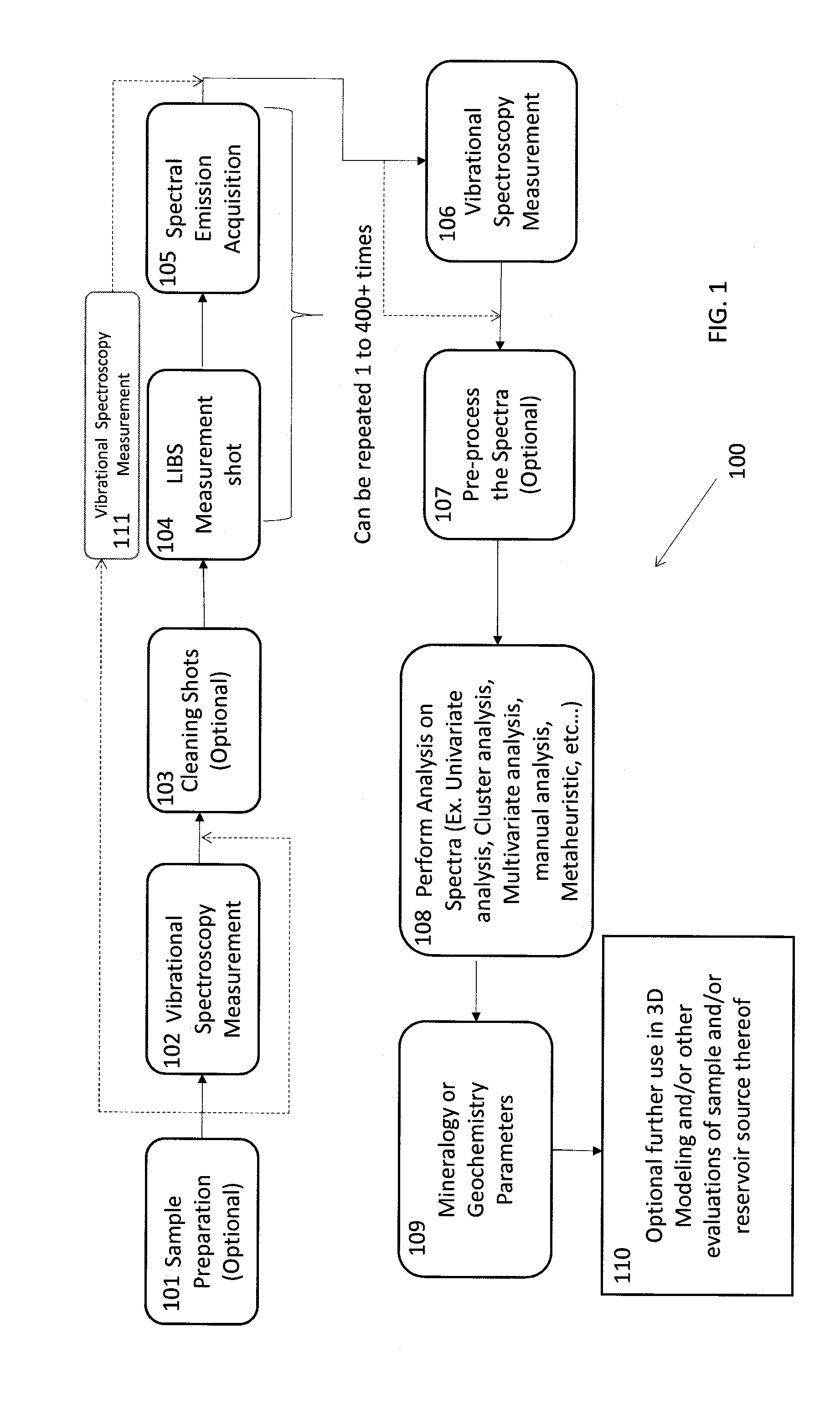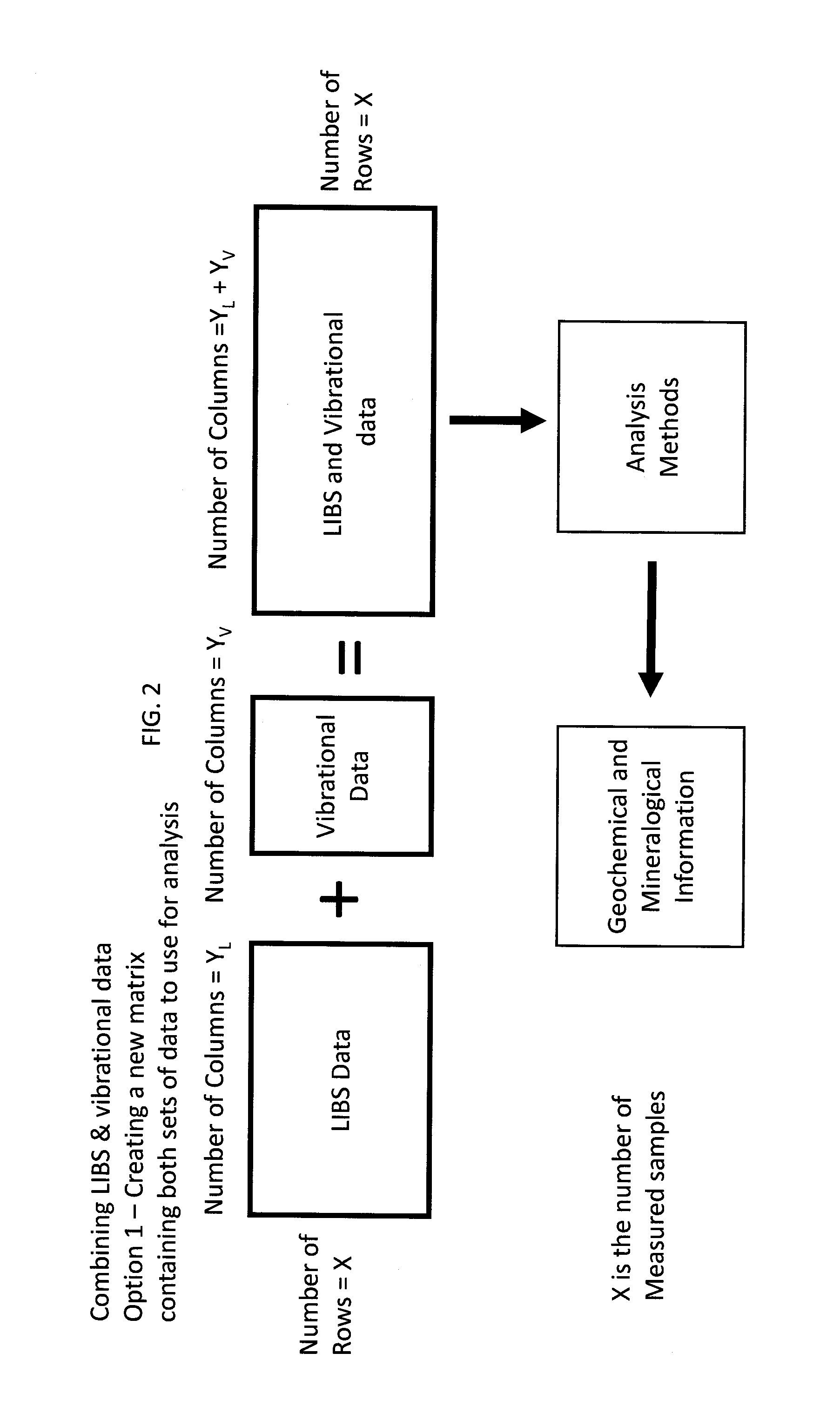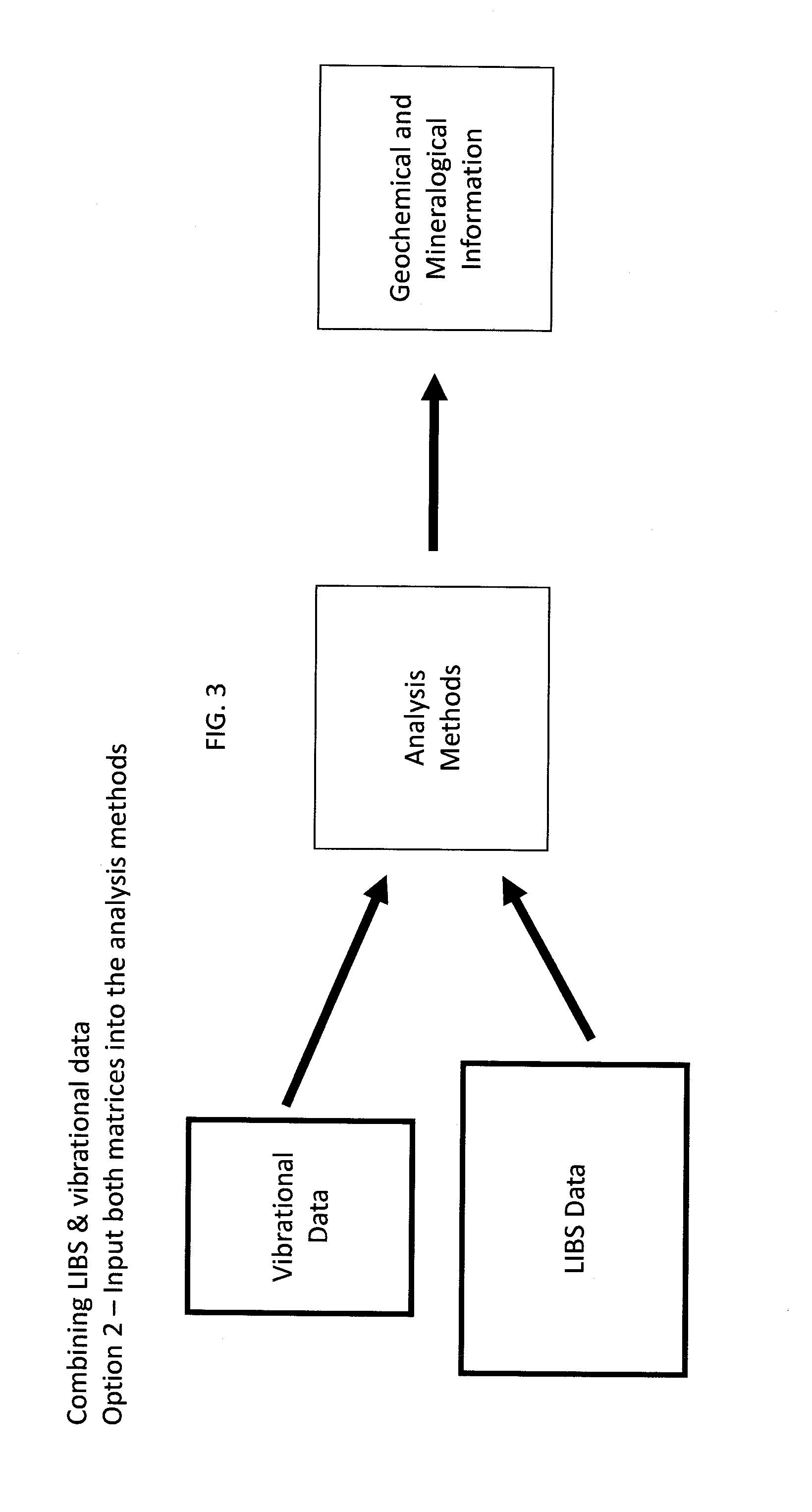Combined Vibrational Spectroscopy And Laser Induced Breakdown Spectroscopy For Improved Mineralogical And Geochemical Characterization Of Petroleum Source Or Reservoir Rocks
- Summary
- Abstract
- Description
- Claims
- Application Information
AI Technical Summary
Benefits of technology
Problems solved by technology
Method used
Image
Examples
Embodiment Construction
[0045]The present invention relates in part to a method for determining geochemistry or mineralogy of at least one geological sample, such as petroleum source or reservoir rocks or other geological samples having organic content, with a combination of a vibrational spectroscopy technique and laser-induced breakdown spectral measurements. The vibrational spectroscopy measurement comprises irradiating a sample with light of known wavelengths. Depending on the acquisition mode used, either the reflected or transmitted light from the sample is measured using a spectrometer to determine the wavelengths absorbed by the sample. The LIBS measurement is performed on the geological sample in a time variant manner with spectral acquisitions made after each of a plurality of measurement shots. Optional or as needed pre-processing is applied to the collected vibrational spectroscopy and LIBS data from the spectral acquisitions and the raw or pre-processed data is analysed to determine at least o...
PUM
 Login to View More
Login to View More Abstract
Description
Claims
Application Information
 Login to View More
Login to View More - R&D
- Intellectual Property
- Life Sciences
- Materials
- Tech Scout
- Unparalleled Data Quality
- Higher Quality Content
- 60% Fewer Hallucinations
Browse by: Latest US Patents, China's latest patents, Technical Efficacy Thesaurus, Application Domain, Technology Topic, Popular Technical Reports.
© 2025 PatSnap. All rights reserved.Legal|Privacy policy|Modern Slavery Act Transparency Statement|Sitemap|About US| Contact US: help@patsnap.com



